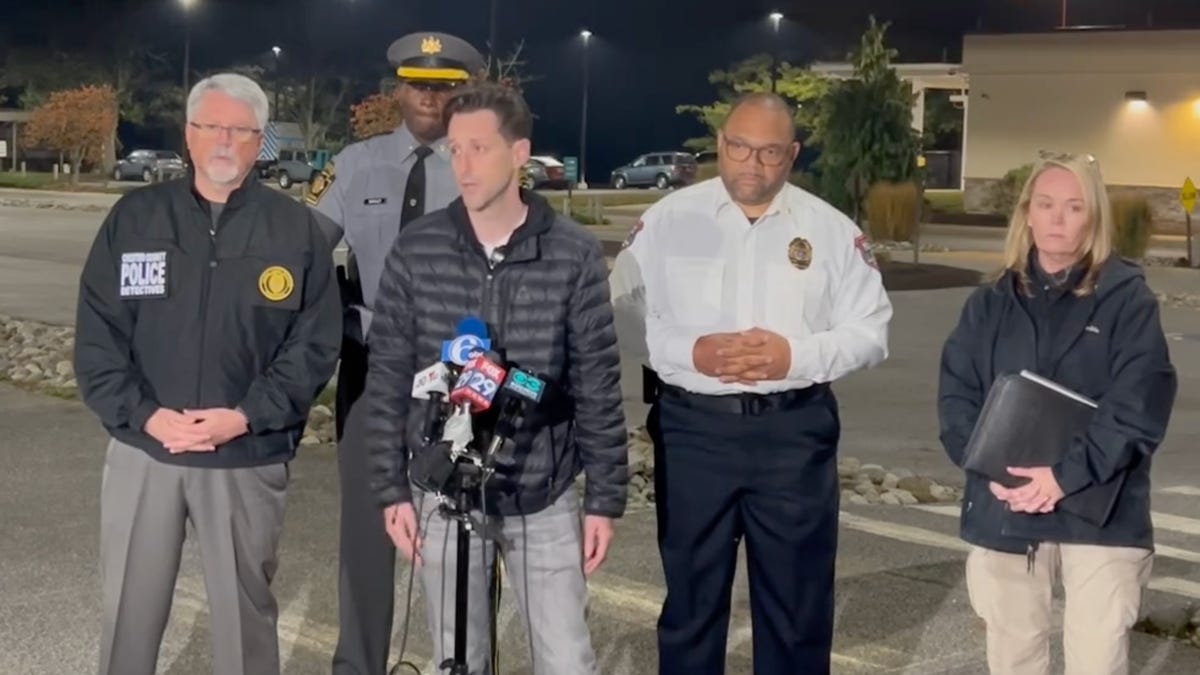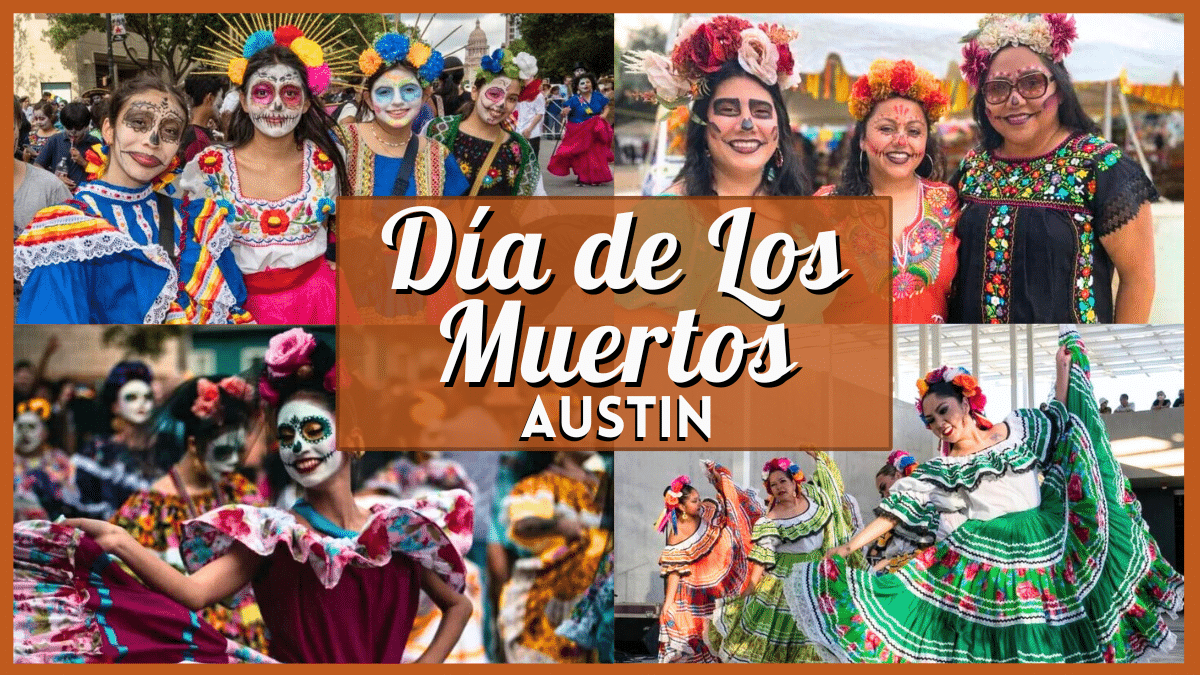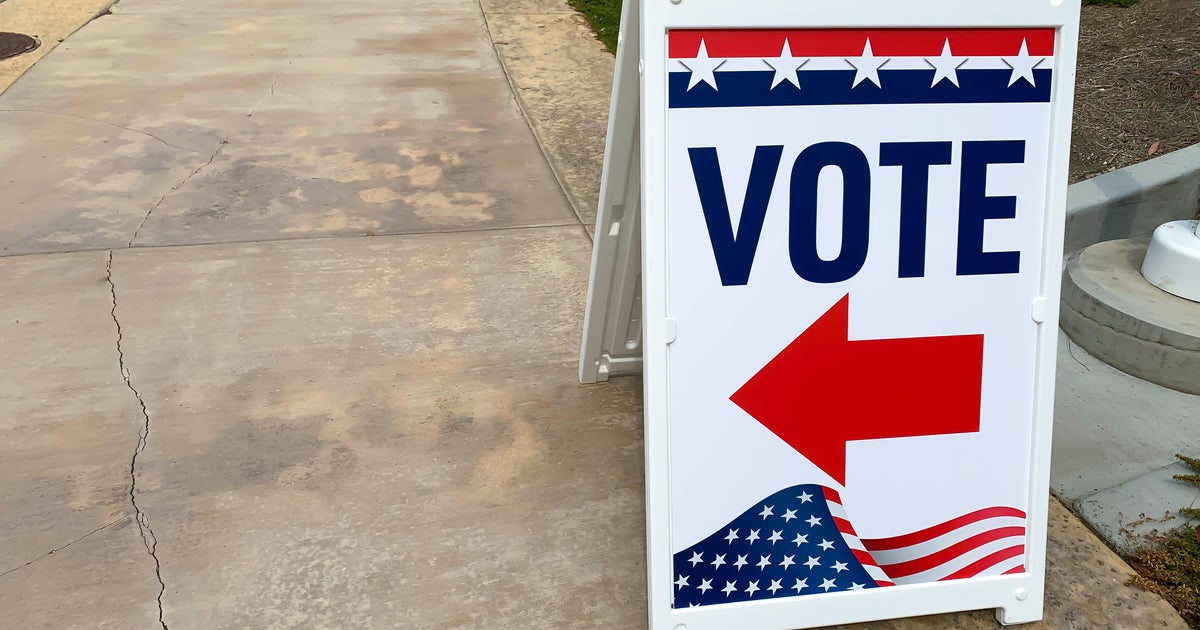Lifestyle
'The only thing still left.' Volunteers race to save Altadena's vintage tiles from the bulldozers

The team of masons, covered in dust and sweat, had been working in the ruins of the Altadena house for hours when a shout echoed across the wreckage.
Volunteer Devon Douglas emerged from a pit of rubble that had once been the living room, staggering under the weight of a concrete slab more than a foot wide.
“It’s a stair,” Douglas said, turning toward homeowner Valerie Elachi. “A whole stair, and all the tiles.”
It was a bittersweet moment for Elachi, 76, who had danced down that tiled staircase when she and her husband first saw the home during an open house in the early 1980s.
She watched from her patio wall as five volunteers chiseled the historic tiles from the stairs and from her massive living room fireplace. Having something to salvage was a gift, she thought, and a bitter reminder of all they had lost.
Cliff Douglas uses a chisel to gently remove historic Batchelder tiles from the fireplace of a 1923 Altadena home built by noted local architects Myron Hunt and Elmer Gray.
(Allen J. Schaben / Los Angeles Times)
The work on Elachi’s home was being done by a ragtag group of volunteers who call their collective Save the Tiles. The group is racing to remove and preserve thousands of vintage and historically significant tiles from the Eaton fire burn zone before the properties are bulldozed by the U.S. Army Corps of Engineers.
As part of their work to remove debris and level lots for rebuilding, the Army Corps tears down everything left standing on a property. That includes chimneys and fireplaces, which can be left structurally weakened by fire.
“Anything you haven’t removed is gone forever,” said Eric Garland, one of the Save the Tiles organizers.
The volunteers have preserved the tiles from about 50 homes, and have about 150 left on their list. Already, they’ve had one close call, removing the tiles from one home just two days before the Army Corps arrived.
Finding enough skilled masons was the group’s first challenge. Now, their biggest hurdle is tracking down the homeowners and getting their permission to remove tiles from their properties.
A team of volunteers is using public records to trace homeowners, but they’re hitting a lot of dead ends. Property records generally don’t contain any contact information, and when they do, the phone numbers are often out of date. In some cases, the numbers ring to landlines that burned down.
“There will be a day, soon, when we wake up and there are no houses in our queue,” Garland said, “even though we know there are dozens left.”

The Batchelder tiles removed from Valerie Elachi’s fireplace were placed in a cardboard box before being cleaned and packed for long-term storage.
(Allen J. Schaben / Los Angeles Times)
The group’s last-ditch effort to reach homeowners is a letter. Mail is still being forwarded, Garland figured, so maybe it was worth a shot.
“Dear displaced neighbor,” the letter begins. “… We are just volunteers and Altadena neighbors desperate to reach you because we want to rescue your historic fireplace tiles for free. That’s it. No strings. Just trying to save what’s left of beautiful Altadena and bring some joy.”
:::
Garland embarked on the tile rescue mission after a walk through Altadena with his teenage daughter.
Their house survived the Eaton fire, but many on their street did not, including their neighbor Fred’s 1924 Spanish-style house. Amid the rubble, they spotted his century-old fireplace, its gray, brown and beige tiles still intact.
“That beautiful fireplace is all they have left,” Garland’s daughter said.
Garland emailed the neighborhood list-serv to ask whether anyone was saving the tiles. One response sent him to Douglas, who had written on Reddit that her father, Cliff, a professional mason, was volunteering to remove tiles from ruined homes for free.
The teams joined forces. In early February, they gathered dozens of volunteers in the parking lot of an Aldi grocery store in Altadena. Garland and fellow volunteer organizer Stanley Zucker handed out printed maps of the burn zone and sent small groups out on foot, telling them to stick to the sidewalks and photograph any tile that looked remotely historic.
In two days, the volunteers completed an ad-hoc architectural survey of thousands of burned properties. They whittled down the list to more than 200 homes with Arts and Crafts tile, many by the famous Pasadena artisan Ernest Batchelder and one of his main competitors, Claycraft.
First produced on the banks of the Arroyo Seco in 1910, Batchelder tiles were a key part of the California Arts and Crafts movement, a return-to-nature style that was a response to the ornate designs of the Victorian era and the industrialization of American cities.
Most Batchelder tiles are in private homes, but they can also be found on the Pasadena Playhouse’s courtyard fountain, the floors of Pasadena’s All Saints Episcopal Church and the lobby of the downtown Los Angeles Fine Arts Building on 7th Street. (One of his largest surviving commissions, the 1914 Dutch Chocolate Shop in downtown, is generally closed to the public.)
California in the early 20th century was rich with clay and with cultural influence, said Amy Green of Silverlake Conservation, a firm that repairs and restores historic tile. In addition to the Arts and Crafts movement, tile artists began producing a wide variety of works inspired by traditional Mexican and Indigenous designs, as well as European styles like Delft.

Devon Douglas, daughter of professional mason Cliff Douglas, inspects a Mayan-style Batchelder tile that had just been removed from a fireplace.
(Allen J. Schaben / Los Angeles Times)
“It reflects who and what we are,” Green said. “A very interesting mix of people that bring different aesthetics and skills to our work.”
Batchelder tiles can be palm-sized or larger, with muted matte finishes and understated glazes. A company catalog from 1923 described the tiles as “luminous and mellow in character, somewhat akin to the quality of a piece of old tapestry.”
They could be ordered through a catalog and were relatively affordable, said Anuja Navare, the director of collections at the Pasadena Museum of History, which maintains a private registry of homes with Batchelder tiles. Many middle-class families splurged a little and installed them in new bungalows in the 1910s and 1920s.
“He made beauty available to a person with modest means,” Navare said.
The work of Batchelder and his competitors spread to thousands of homes, businesses and civic institutions across Southern California.
American tastes changed, and, by the end of World War II, many of the tile companies had gone under. Arts-and-crafts tiles were painted over or ripped out in favor of the avocado greens and burnt oranges of the 1970s.
But the tiles have come back into vogue in the last two decades and have developed a cult following among design enthusiasts. Actress Diane Keaton has renovated entire homes with historic tiles, and preservationists have been known to dumpster dive to save Batchelder tiles from the landfill.
A single salvaged tile can sell for more than $200. A fully intact hearth and mantle can fetch 100 times that.
Early on, the Save the Tiles group was on high alert for looters in the burn zone. Most people would drive past the ruins of a home without a second look at the fireplace, but a select few know what to look for.
Cliff Douglas, the mason, said he had assessed several fireplaces along one street and returned to find the tiles gone. It was impossible to know, he said, whether the tiles had been removed by the homeowners or by someone else.
The group tackled the most visible fireplaces first, including those on corner lots. One volunteer with Hollywood set-building experience built false fronts to disguise fireplaces as any other fire debris.
The tiles must be removed by trained masons, and Save the Tiles now has four crews ready every day, made up of volunteers and workers whose employers are covering their wages. The group plans to start paying the masons from a GoFundMe that has now raised more than $100,000.

Cliff Douglas inspects a historic fireplace covered in Batchelder and Grueby tiles.
(Allen J. Schaben / Los Angeles Times)
About 20 volunteers learned from Green how to properly clean, catalog and store the tiles. Some cracked tiles will still need to be professionally restored, which will cost money, but a lot of the work can be done by amateurs, Garland said.
Some of them are sitting in boxes on a side porch at Garland’s mother’s house, and others are in a climate-controlled warehouse in Harbor City donated by a friend in the tile industry. The tiles will wait until homeowners are ready to take them back.
The power of the project, Green said, is that the hearth has such importance in the home: “It provides warmth,” she said. “It’s where you gather.”
:::
Despite the pressure of the bulldozers moving closer, removing the tiles is delicate work that can’t be rushed.
On a recent weekend, ceramicist Jose Nonato stood in the rubble of a three-bedroom home along East Altadena Drive, his hair, forearms and apron coated in dust. The third-generation ceramicist from Mexico City saw a Facebook post about the rescue effort and showed up with his tools. He had been working for hours in the sun on his 30th wedding anniversary to extract tiles surrounding a fireplace.
The tiles had been fired once, a hundred years ago, in kilns that reached 2,200 degrees Fahrenheit, Nonato said. He said the Eaton fire had thrown them into thermal shock. They could crumble at any moment.
Nonato laid his chisel against the mortar and gingerly began to tap the top of the tool with a hammer. He gently pried loose a tile the size of a paperback book and wiped his hand across the dusty surface. A faint green hue shone through — a Batchelder.
By the end of the day, Nonato had rescued about 90% of the tiles and laid them on a blanket in the driveway in the same pattern as the fireplace. A few were broken and held together by red duct tape, but those would be repaired. Soon, the tiles would be cleaned, boxed and stored for the homeowners, who planned to rebuild.
“This is basically the only thing still left,” Nonato said. “This, and memories.”
:::
Elachi, the Altadena homeowner, had initially hoped that the tile volunteers could shore up the massive Batchelder fireplace in her living room so the home could be rebuilt around it.

From left, Cliff Douglas and his assistants Martin Vargas, Jorge Vargas and Roberto Murillo remove debris from the hearth of a home in Altadena.
(Allen J. Schaben / Los Angeles Times)
To her disappointment, Cliff Douglas told her that the mortar had been weakened in the fire. Everything would have to come down, he said, or the Army Corps would take it down themselves.
Elachi and her husband raised their daughter in the 1923 Pueblo Revival-style home and spent four decades caring for the property, embracing its Southwestern style and finding furniture and art that, along with the pink adobe walls and wood beams above the windows, would have looked at home in Santa Fe.
“This house was like another child to us,” Elachi said.
The fire had taken almost all of it: her husband’s memorabilia from 15 years as the director of the Jet Propulsion Laboratory, their ceramics and furniture, all their photographs and books. The loss felt overwhelming and enraging. They hope to rebuild, but aren’t sure yet whether they will.

Lifestyle
In ‘Hedda,’ Tessa Thompson is an agent of chaos we love to see : Pop Culture Happy Hour

Tessa Thompson in Hedda.
Amazon MGM Studios
hide caption
toggle caption
Amazon MGM Studios
In the new film Hedda, Tessa Thompson plays a woman bored with her dull husband, and who devilishly manipulates the affections of everyone in her orbit. Writer/director Nia DaCosta makes some bold changes in this adaptation of the classic Henrik Ibsen play Hedda Gabler, and sets almost all of the action during a lavish party gone awry. But this is not your grandmother’s Hedda. It’s sexy, chaotic, and, above all, messy as hell. It’s streaming on Prime Video.
Follow Pop Culture Happy Hour on Letterboxd at letterboxd.com/nprpopculture
Lifestyle
Case Study | The New Playbook for Fashion PR

Lifestyle
This old steakhouse transforms into SoCal’s hottest salsa dancing hub by night

In the working-class city of Commerce, where cars speed past on highways and the Citadel Outlets tower over neighborhoods, there is a steakhouse named Stevens. By day, it’s a classic and charming old restaurant where working people go for quiet, hearty meals.
But every Sunday night, the outside world disappears.
As waiters whisk about in starched button ups, couples lead each other by the hand toward the dance floor in the restaurant’s ballroom, where Stevens’ tradition of Salsa Sundays has been bringing the community together for 73 years.
At 7 p.m. every Sunday, beginner lessons start at Stevens Steakhouse.
(Emil Ravelo / For The Times)
An eight-piece band plays brass, electric guitar, bongos and timbales, filling the room with music as dancers twirl in a dizzying array. One attendee, 29-year-old Amy Hernandez, greets a few familiar faces before she steps onto the dance floor, spinning in confident steps with a wide smile on her face.
Hernandez is part of a revival that’s been getting younger people excited about salsa music — and flocking to Stevens. She grew up watching her father dance salsa, but started diving back into the genre on her own to find comfort during the L.A. wildfires earlier this year. She credits Bad Bunny’s “Debí Tirar Más Fotos” for re-sparking her interest.
“It was very healing for me,” she says of the album, which blends old-school Puerto Rican boricua samples with Latin dance and reggaeton influences for an emotional imagining of Puerto Rican identity.

For decades, Stevens has brought friends, couples, and families together for live music and dance.
(Emil Ravelo/For The Times)
When college friends recommended Stevens as an affordable place to dance, Hernandez mentioned it in passing to her dad. “He laughed and said, ‘I remember that place. I used to dance there too,’” Hernandez says.
The increasingly mainstream artists of Latin fusion genre reggaeton are returning to tradition. Along with the music of Bad Bunny, who’s headlining the upcoming Super Bowl halftime show, you can find classic salsa references in reggaeton star Rauw Alejandro’s latest album “Cosa Nuestra,” and in Colombian pop star Karol G’s multi-genre summer album “Tropicoqueta,” which will be at the center of her headlining Coachella set.
“You can feel the younger energy,” says longtime Stevens salsa instructor Jennifer Aguirre. “It makes me really happy to see a younger generation take on salsa. Because I was worried for a bit. I didn’t know how salsa is going to continue.”
Los Angeles has a unique relationship with salsa, the Afro-Caribbean dance born from Cuban mambo. In cities like Miami and New York, salsa arrived with Cuban and Puerto Rican immigrants. Instead, L.A.’s salsa influence came from Golden Age Hollywood, where Latin dance in movies produced a singular, flashier Angeleno style, characterized by quick turns and theatrical movement, according to salsa historian Juliet McMains.
The 1990s were another high for the genre, when West Coast pioneers like the Vazquez brothers and their first-of-its-kind dance team Salsa Brava sparked a local dance craze. The Vazquezes introduced the “on-1” step and innovated a flashier, dramatic style of salsa in L.A. that brought crowds to competitions and congresses through the 2000s. Legendary late promoter Albert Torres founded the L.A. Salsa Congress in 1999, the first congress on the West Coast, drawing a worldwide audience for Angeleno salsa.
Opened in 1952 by Steven Filipan (and located on Stevens Place), Stevens in Commerce became a local hub for Latin music. “The interesting part was that the area wasn’t Latin at all,” says Jim Filipan, Steven’s grandson and now the third-generation owner of the restaurant. “My grandfather had a foresight that this genre would be the future.”
Jim recalls his childhood growing up in the restaurant. “We would have hundreds of people on Sundays,” he says. “The ballroom, the restaurant, everyone was dancing salsa, and it was incredible. My dad took over in the ‘70s, and I was running it with him in the ‘90s.”
Yet by the 2010s it was apparent that another genre was taking hold of the Latin dance scene: bachata, ushered in by smooth-singing New York stars like Prince Royce and Romeo Santos. Salsa quickly went from being considered hip to rather old-fashioned.

During a Stevens dance lesson, guests learn how to spin on the dance floor.
(Emil Ravelo / For The Times)
Aguirre witnessed the genre lose interest firsthand. “It was like an immediate switch,” Aguirre says. “Salsa just wasn’t as popular anymore, and people would walk over to the other side of the restaurant to take the bachata lessons.”
The pandemic also dealt a large blow to local salsa clubs, as peers in the long-standing dance club industry fell to lower attendance rates and rising rent. And in the last year, two historic venues, the Conga Room and the Mayan, closed permanently.
Stevens almost had the same fate. The financial burdens during the pandemic made Jim consider closing for good. But he couldn’t help but consider the responsibility of his family’s legacy and the special place Stevens holds for local dancers.
“It’s very emotional for me because I have four generations in this restaurant, and now my daughter works here,” he says.
When Stevens reopened, the community came back in droves, ushering in a new era of excitement for salsa.
These days, at the beginning of every class, dance instructor Miguel “Miguelito” Aguirre announces the same rule.
“Forget about what happened today, forget about your week, forget about all the bad stuff. Leave it at the door,” Aguirre says. “It’s going to be better because we’re going to dance salsa.”

Dance instructor, Miguel Aguirre, right, mans the DJ booth alongside DJ Pechanga, another longtime employee of Stevens. Every weekend, the duo brings Latin music to the forefront of the space.
(Emil Ravelo/For The Times)
Aguirre has taught salsa at Stevens for 30 years. In many ways, the steakhouse has shaped his life. It’s where he discovered his love for teaching dance and much more.
“I started coming here in the ‘90s, sneaking in through the back door. I was a teenager, so not old enough to show my ID, but one day, Jim just said, ‘You guys cannot come in through the back anymore. You can come into the front,’” Aguirre says. “And then one day he said, ‘Hey, we are missing the instructors. They’re not coming in. Can you guys teach the class?’ And, I’m still here.”
Jennifer Aguirre, a fellow dance teacher at Stevens, is his wife. She met him one day at Stevens’ annual Halloween party.
“He asked me to join his class because they ‘needed more girls,’” Jennifer says, laughing.
Now Jennifer teaches the beginner’s class, while Miguel is on intermediate. But once 10 p.m. hits, it’s social dancing time. The whole floor comes together and a familiar community converges. If attendees are lucky, they might catch Jennifer and Miguel, a smooth-dancing duo, letting loose, stepping and dipping effortlessly.
On a recent Sunday night, the low-lighted ambience of the restaurant met the purple lights of the dance room, with people sitting all around for a peek at the moves on display. Buttery steaks and potatoes cooking in the kitchen tinged the air as the dance floor came alive with women spinning in dresses and men in shining shoes gliding to the rhythm of the music. Miguel Aguirre manned the DJ stand, asking two singles if they knew each other and encouraging them to dance.
Gregorio Sines was one of the solo dancers on the floor, swaying partners easily under Miguel’s encouragement. Years ago, his friend, who frequented Stevens, dragged Sines out to dance socials, telling him it would be the best way to meet people and open up.
As someone who began with anxiety to dance in front of others, Sines now performs in Stevens’ dance showcases. He says consistently returning to the steakhouse’s historic floor and immersing himself in the supportive community not only changed his dance game, but brought him out of his shell.
“I tell anyone, if you’re scared to dance, you just have to get out there,” Sines says. “There’s a community waiting for you.”
-

 Milwaukee, WI7 days ago
Milwaukee, WI7 days agoLongtime anchor Shannon Sims is leaving Milwaukee’s WTMJ-TV (Channel 4)
-

 News1 week ago
News1 week agoWith food stamps set to dry up Nov. 1, SNAP recipients say they fear what’s next
-

 Alabama1 week ago
Alabama1 week agoHow did former Alabama basketball star Mark Sears do in NBA debut with Milwaukee Bucks?
-

 News1 week ago
News1 week ago1 dead, 6 injured in shooting at Lincoln University homecoming festivities
-

 Austin, TX1 week ago
Austin, TX1 week agoDia De Los Muertos Austin: Parades, Altars & Events
-

 Culture1 week ago
Culture1 week agoVideo: Tyler Mitchell Breaks Down Three Photos From His New Book
-

 Culture6 days ago
Culture6 days agoVideo: Dissecting Three Stephen King Adaptations
-

 Seattle, WA7 days ago
Seattle, WA7 days agoFOX 13’s Aaron Levine wins back-to-back Jeopardy! episodes














